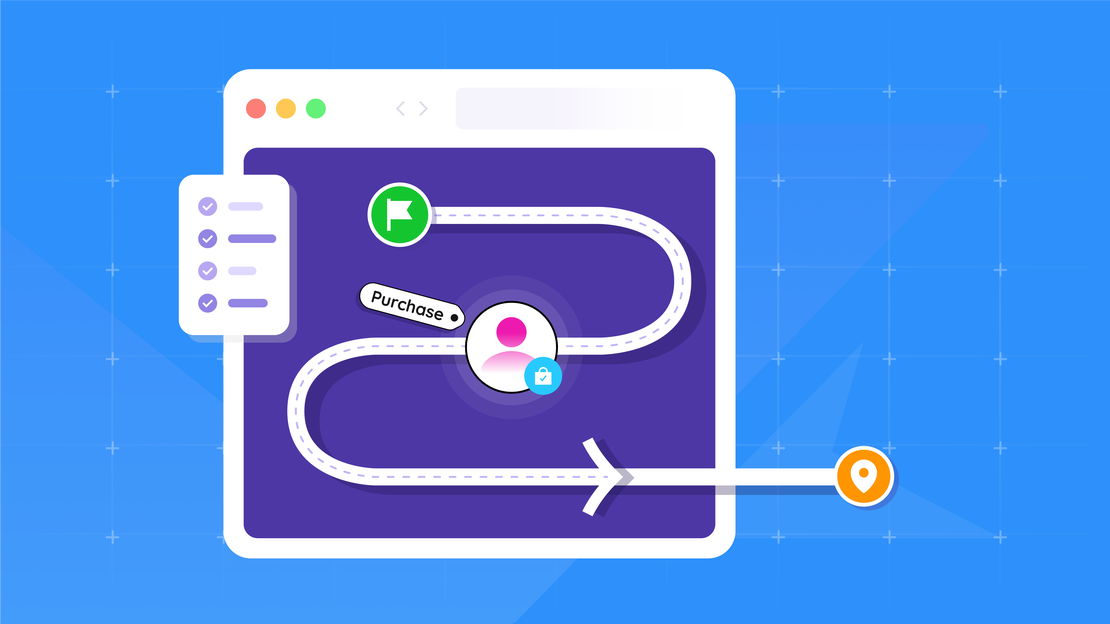Customer Journey Map: What Is It And How To Create One

Table Of Contents
What is a customer journey map?
A customer journey map outlines the steps a customer takes from their first interaction with your brand to the moment of purchase—and beyond.
The goal is to understand and enhance the customer experience at every stage of the journey.
What are the stages of a customer journey?
- Awareness: The customer discovers your brand through content marketing, advertising, or recommendations
- Consideration: The customer compares options and gathers information
- Decision: The customer selects the product that best fits their needs
- Purchase: The customer completes the transaction
- Aftercare: The customer receives valuable follow-up information to maintain engagement
- Advocacy: The customer becomes loyal and recommends your brand to others
What information should you include in a customer journey map?
A customer journey map typically includes the following elements:
- Stages of the customer journey – The different phases a customer goes through
- Customer needs and emotions – What does the customer want at each stage? How do they feel?
- Channels and touchpoints – Where does the customer interact with your brand? Website, social media, email, customer service?
- Pain points and opportunities – Where do customers face obstacles, and where can you improve their experience?
The key question: how do customers navigate your content?
A customer journey map helps you see where customers get stuck and where you might lose them. In other words: how do they navigate through your content? This applies to both your website and social media.
Important touchpoints on your website include:
- Your blog
- Your contact form
- Your lead magnet
Interestingly, your homepage is often not a primary touchpoint—most visitors arrive via your blog or paid ads leading to a landing page.
That said, your homepage still plays a crucial role. It should clearly communicate who you are and guide visitors toward their next step. Do you want them to contact you, sign up for your newsletter, or book an appointment? Make it clear and actionable.
Keep it simple and engage your (potential) customers
Creating a customer journey map doesn’t require complicated jargon. Start simple and gradually expand with more details as you go.
Want to know where customers get stuck? Ask them!
Say you run a yoga studio but aren’t sure why people aren’t booking classes. You might assume it’s due to pricing or your sales page—but is that really the issue?
Maybe potential customers find the sign-up process confusing. Maybe it’s the visual layout rather than the pricing or offerings that’s holding them back.
Validate your assumptions with real customer feedback
Don’t guess—ask. Reach out to:
- Leads who showed interest but didn’t convert
- Visitors who added something to their cart but didn’t complete the purchase
- Email subscribers who haven’t yet booked a class or service
Ask simple questions:
- “What stopped you?”
- “How can we improve your experience?”
The insights you gain will help you make targeted improvements that radically enhance your customer journey.
Customer journey map: 3 examples
There are several types of customer journey maps you can create. Below, we discuss three key examples.
1. The First Encounter
The first encounter refers to a visitor’s first interaction with your website. To optimize this stage, analyze your most important pages and identify areas for improvement.
- Check Google Analytics for the top 3 most-visited pages
- Identify where visitors drop off
- Ensure each page has a clear call to action and a logical next step
- Verify that everything works—contact forms, buttons, and links
2. Buyer’s Journey Map
When does a visitor become a customer? What obstacles might prevent them from making a purchase?
- Is your information clear and accessible for your target audience?
- Are you providing too little or too much information?
- Could your sales page be overwhelming?
Review your content from the perspective of your audience. If the buying process feels complicated, they may leave before converting.
3. The Loyal Fan
What happens after someone becomes a customer? How do you keep them engaged and encourage them to promote your brand?
Consider actions like:
- Sending follow-up emails
- Sharing valuable content
- Offering exclusive discounts
- Personalizing your communication
- Creating a loyalty program
These steps help turn customers into brand ambassadors who return and recommend you to others.
Test FlowQi CRM + our other tools completely free of charge
FlowQi CRM helps you create an effective customer journey map by storing customer data, tracking key touchpoints, and ensuring communication is tailored to each stage of the journey.
Sign up now as a tester for our BETA Program and try FlowQi CRM (plus all our SME tools) completely free of charge.